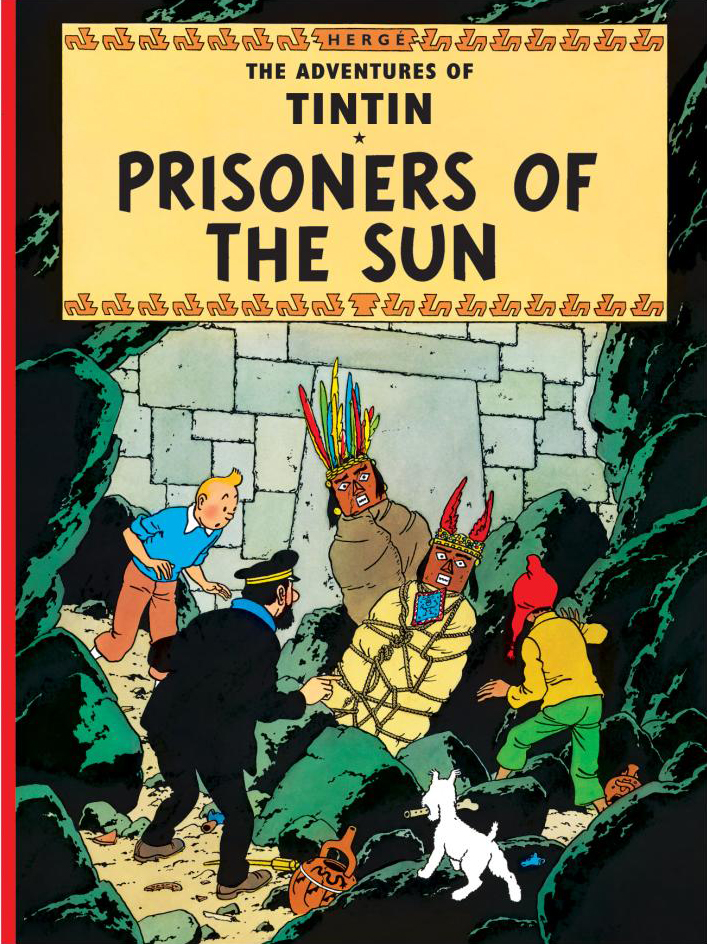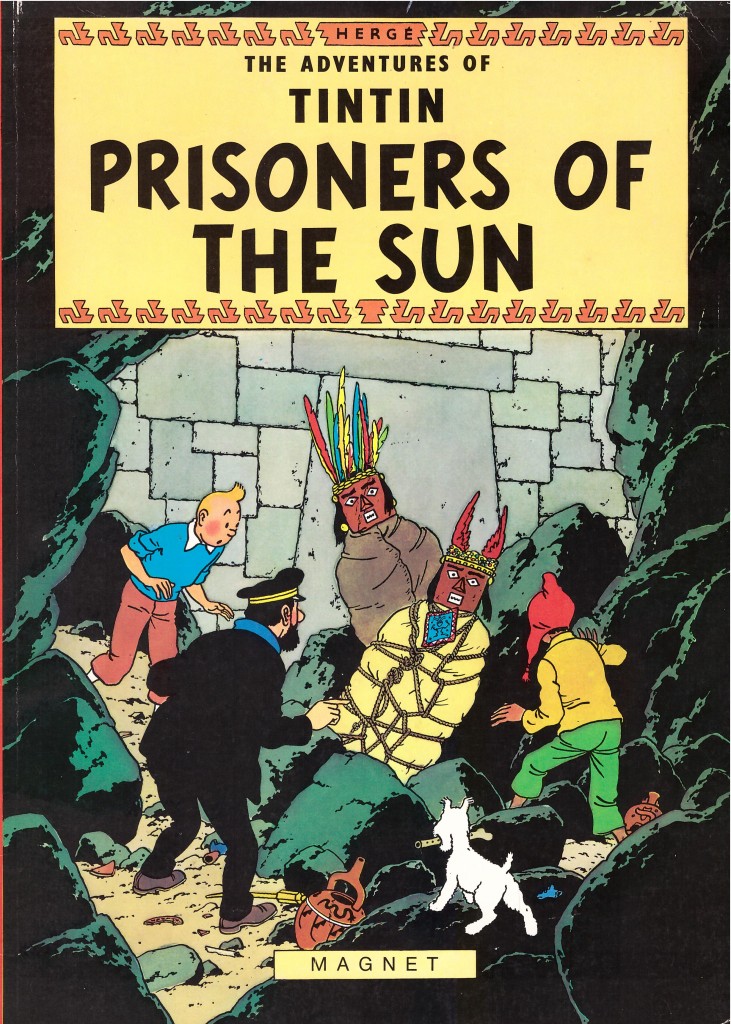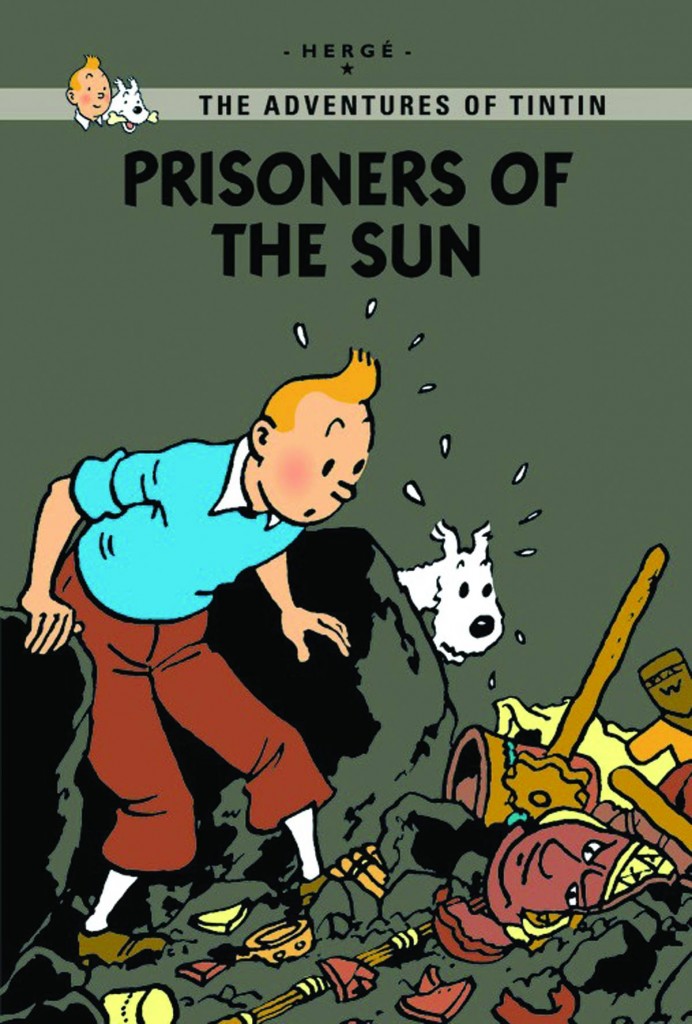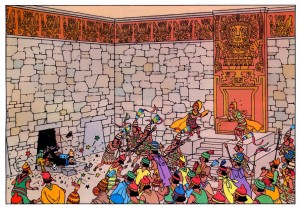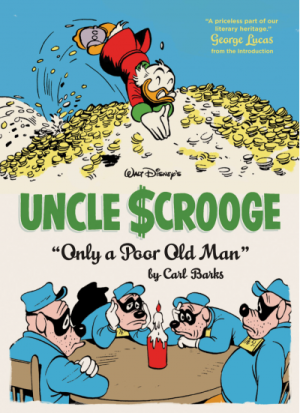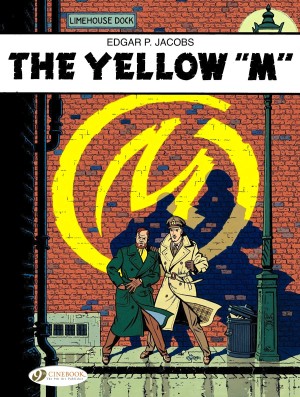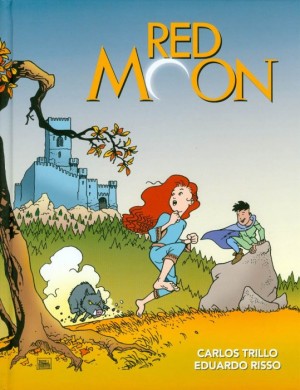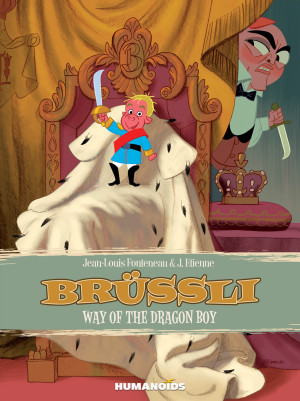Review by Roy Boyd
This fourteenth Tintin book, completes the story begun in The Seven Crystal Balls. That was a Hitchcock-influenced detective story, and one of the few Tintin books with a purely domestic setting, but for the second half of the tale Hergé set out to tell an action-packed adventure against the dramatic background of the long-vanished Inca Empire.
This book is, first and foremost, a quest, with Tintin, Snowy and Captain Haddock flying to Peru to traipse through rainforests, over Andean mountains and through all sorts of dangerous and life-threatening terrain in search of their kidnapped friend, Professor Calculus. While this book has all the usual beautifully rendered vehicles that Hergé so clearly loved, there is a great deal of walking and illustratively, no other Tintin book features so many changes of scenery. However, it’s anything but boring, and some of the scenes are genuinely thrilling, especially one in which they face off against a bunch of hungry alligators. An aspect worth mentioning is how skilfully Hergé’s illustration deceives the reader when necessary. A basic example is Haddock sitting down after warning about alligators, with the next panel revealing he’s sat on one. This is perhaps the most terrifying of all the Tintin books.
Hergé was never afraid of recycling plot devices that worked in the past, and this book has Tintin leaping to the defence of a young native, an act of kindness that pays off in spades when the story demands. The young boy, Zorrino, joins our intrepid and determined trio on their search for Calculus, and he’s with them when they discover a surviving remnant of the Incan civilisation.
True to form, Tintin and Haddock are taken prisoner and sentenced to death, but Tintin (using information gleaned from a very convenient press clipping) tricks the Incas into thinking that he controls the sun. Hergé was well aware that it was highly unlikely that any surviving Incas would be fooled by Tintin’s trick. Say what you like about the Incas, they knew their astronomy. This always bothered him, but it doesn’t really detract much from a very dramatic scene, and, to be fair, these books have long been full of preposterous coincidences and unlikely plot devices, even at their best. It should be noted it has a literary tradition extending back to the late 1800s in A Connecticut Yankee in King Arthur’s Court and King Solomon’s Mines, and when used here it was still relatively novel. If that’s not good enough, consider this: how many English language graphic novels or newspaper strip collections have been continually in print since 1949?
Like the first half of this tale, this is classic middle-period Tintin. Hergé was going through a difficult time in his personal life while working on this book, but it’s to his credit (and that of his various assistants) that one would never notice. It’s thoroughly researched, with detailed costumes and convincing and dramatic settings aplenty. As before, steering clear of overtly political tales meant Hergé had to concentrate on plot and character, and the series clearly benefits from the limitations that he was forced to work under.
After a pair of two-parters, Hergé would next turn his attention to the book that he’d had to abandon (partly because it had a German villain) when the Nazis occupied his country: The Land of Black Gold.
